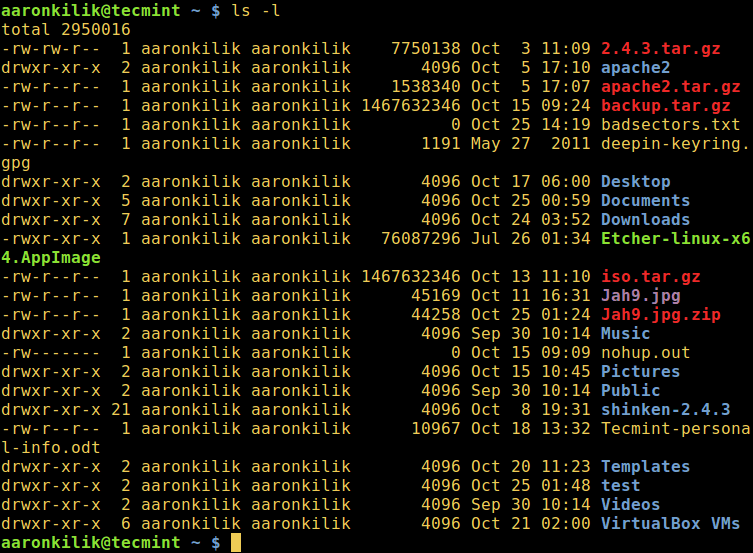
- Linux list directory contents and permissions how to#
- Linux list directory contents and permissions full#
Linux list directory contents and permissions how to#
Example 8: How to Use Find Command to List all the 777 permission directories belong to Specific Group in Linux.


Example 6: How to Use Find Command to List all the 777 permission files owned by Specific User and Specific Group.Example 5: How to Use Find Command to List all the 777 permission files belong to Specific Group in Linux.Example 4: How to Use Find Command to List all the 777 permission files owned by Specific User in Linux.Example 3: How to Find all directories on Server with 777 Permissions in Linux.Example 2: How to Find all files on Server with 777 Permissions in Linux.Example 1: How to Find all files and directories with 777 Permissions in Linux.Find Command Examples to List all Files and Directories with 777 Permissions in Linux.If you have folders that need to be writable by the web server, you can just modify the permission values for the group owner so that For security reasons apply this only where necessary and not on the whole website directory. In simple words, new files and directories created by the web server will have the same group ownership of / folder, which we set to www-data with the second command. The s flags is a special mode that represents the setuid/setgid. The last command makes all files/folders created within the directory to automatically take on the group ownership of the parent folder, that is your web server. 4: new files and folders inherit group ownership from the parent folder chmod g+s /var/www// Once again this is done on every file and folder in the directory, recursively. the web server), zero permissions at all (0) for others. you), read and execute (5) for the group owner (i.e. The third command sets the permissions: read, write and execute (7) for the owner (i.e. This command sets 3: 750 permissions for everything chmod -R 750 /var/www// 2: set the web server as the group owner chgrp -R www-data /var/www// This command sets john as the owner of every file and folder inside the directory ( -R stands for recursive). 1: set your user as the owner chown -R john /var/www// To get started, login into your server and run the four commands below. No one else will be allowed to mess around with the whole website directory.

The web server will be the group owner and initially will have read and execute permissions, except for some folders where it will have write access.

Linux list directory contents and permissions full#
Your user will be the owner of the website directory and will have full read, write and execute permissions. So the web server needs to read the static content in order to display it to the public, as well as write data into the site folder as instructed by the script files.įinally, let's pretend your user is called john, the website folder is located in /var/Set the folder permissions The site is made of static content like CSS, images, HTML pages as well as some dynamic content generated by the web server on the fly - for example, a PHP script that manages file upload. You are the project owner and the sole user responsible for maintaining it. The website is stored in a Linux server like Ubuntu, and it is run by a web server like Apache or Nginx. In this article I want to sort it out for good. This is something that has been bugging me since my day one of web development.


 0 kommentar(er)
0 kommentar(er)
